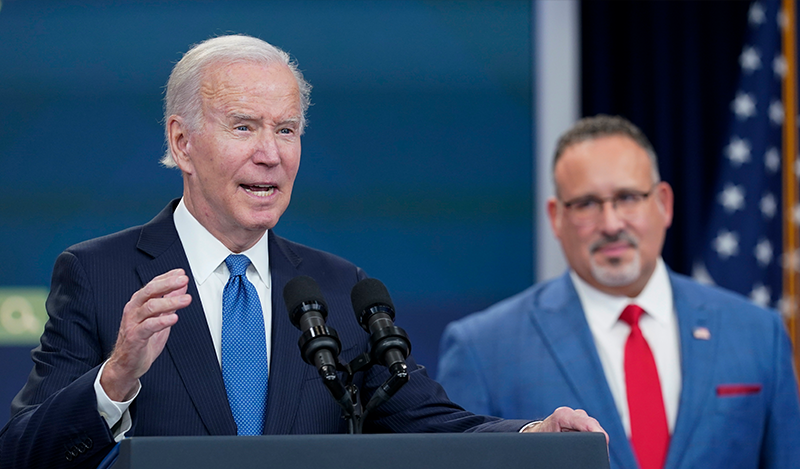
April 11, 2025
How The Trump Administration Can Address The Student Loan Nonpayment Crisis
After the federal government suspended student loan repayment for four and a half years, payments are finally due again—yet less than half of borrowers are repaying their debts on time. These high rates of student loan nonpayment threaten to ruin many borrowers’ credit records and send millions into default. Low student loan receipts could also cost taxpayers…

April 8, 2025
Could A Higher Endowment Tax Pressure Elite Schools To Expand?
Congressional Republicans are considering a significant hike in the excise tax on the endowments of rich universities as part of a broader tax reform effort. Most private universities with more than $500,000 in endowment assets per student are subject to a 1.4 percent excise tax on their net investment income. Some Republicans have proposed raising that tax rate to…

April 4, 2025
How One State Improved Its NAEP Scores
The most recent National Assessment of Educational Progress results had a lot of bad news, but there were some scattered bright spots. Louisiana was one of them. In fact, the Pelican State was the only state in the nation that outperformed its pre-pandemic 4th grade reading scores on the 2024 NAEP. Over the past two…

March 31, 2025
Reimagining Federal Education R&D: DARPA for Education
Earlier in my professional life, I was the head of the political science department at Stony Brook University. When the chairs of the arts and science met, someone from the physical or life sciences would inevitably argue that the “hard” natural sciences deserved more support than the “soft” social sciences. My rejoinder was one of…

March 28, 2025
Cracking the Code Behind Dismal 8th Grade Reading Scores
The most recent round of National Assessment of Educational Progress (NAEP) results delivered a familiar gut punch: Just 30 percent of eighth graders in the United States read at or above the proficient level, a number that’s barely budged in decades. Even in states like Mississippi and Louisiana, which have earned national attention thanks to literacy reforms that have…

March 25, 2025
Less Than Half of Student Borrowers Are Paying Their Loans
Student loan payments have been due for six months now—yet no one seems to have told the students. The federal government effectively suspended payments on student loans for four and a half years due to the Covid-19 pandemic, leading many borrowers to lose touch with their loan servicers and disengage from the repayment system. False promises of loan cancellation…

March 25, 2025
Reimagining Federal Education R&D: IES, Workforce Skills, and State Leadership
The Institute of Education Sciences (IES) has taken a hit from DOGE, losing about 90 percent of its workforce. Regardless of the future of the Education Department, we need to continue to improve education R&D and identify what in IES should be preserved, or indeed expanded, to meet the nation’s needs today and in the…

March 24, 2025
The Student Loan Payment Pause Was a Catastrophic Mistake
In March 2020, as America shut down in response to the COVID-19 pandemic, Congress passed a law suspending federal student loan payments for six months. The payment pause ended up lasting, in effect, for four and a half years. Though well-intentioned, the pause and its repeated extensions may go down as one of the worst mistakes in…

March 21, 2025
Increasing Financial Aid Isn’t the Solution to High College Costs
Harvard University recently announced it would make tuition free for students from families earning below $200,000—but for middle-class students not lucky enough to receive a Harvard acceptance letter, college tuition is still far too expensive. As a solution, many have proposed significant increases in taxpayer-funded financial aid to reduce or even eliminate tuition for many students. This…

March 20, 2025
To Transform K-12 Education, the Trump Administration Should Measure What Matters
When the National Assessment for Educational Progress (NAEP) was first administered in 1969, nearly nine out of 10 American children were born into married, two-parent homes. By 2023, this number had decreased to six out of 10 children on average, with wide variations across racial groups. Stunning disparities in married, two-parent households by race tightly correlate with disparities in child poverty, domestic violence, and father absence—all…